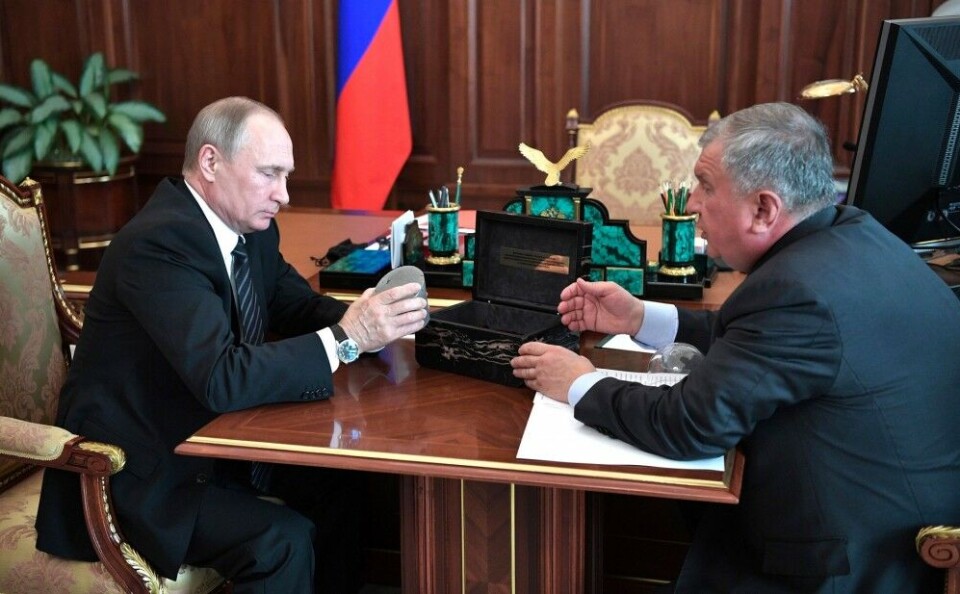
On Putin’s table, a drill sample from the Laptev Sea
«This will truly be a unique oil field», Rosneft leader Igor Sechin says as he gives the president a core sample from the ongoing Arctic drilling operation.
p.p1 {margin: 0.0px 0.0px 0.0px 0.0px; line-height: 22.0px; font: 19.0px Times; color: #111720; -webkit-text-stroke: #111720; background-color: #ffffff}p.p2 {margin: 0.0px 0.0px 0.0px 0.0px; line-height: 22.0px; font: 19.0px Times; color: #111720; -webkit-text-stroke: #111720; background-color: #ffffff; min-height: 23.0px}p.p3 {margin: 0.0px 0.0px 10.6px 0.0px; line-height: 20.0px; font: 17.0px Georgia; color: #292929; -webkit-text-stroke: #292929; background-color: #ffffff}span.s1 {font-kerning: none}
As his company is exploring one of its northernmost ever wells, Sechin this week met with President Vladimir Putin to report about «a major new discovery».
«We can inform you, Vladimir Vladimirovich, that we, based on preliminary analysis, are about to open a very serious field», Sechin said as he handed the President a core sample from the drilling.
The sample is taken from 2,000 meter depths, Sechin said and added that drilling will proceed to 5,000 meter depths.
According to Sechin, preliminarily technical studies from the company’s Laptev Sea zone indicate geological reserves of up to 9,5 billion tons.
«Our geologists are saying that this will be a unique field», he underlined, a transcript from the meeting published by the Kremlin reads.
The Russian state oil company in early April started drilling at its Tsentralno-Olginskaya-1 well, a part of the Khatanga license area by the Laptev Sea.
In mid-June, the company informed that preliminary results show significant resources.
Rosneft completed preparations for drilling at Tsentralno-Olginskaya-1 in record-short time. The company obtained the license in 2015, whereupon extensive seismic mapping was started. After that, a total of 21,000 meter of seismic studies was conducted and as many as 114 prospective structures identified..
During summer 2016, two ice-class ships loaded with more than 8,000 tons of equipment and technology, including the drilling rig, made it from Arkhangelsk to the remote Khatanga Bay.
The Gulf of Khatanga is among the least accessible places in the Russian Arctic. Located east of the Taymyr Peninsula by the ice-covered Laptev Sea, the license area is open for regular shipping only two months in the year. The nearest settlement is Khatanga, a town with a population of about 2,500 located about 350 km to the southwest.
















